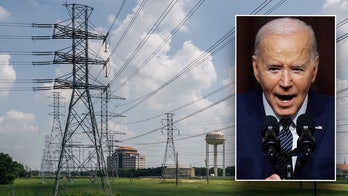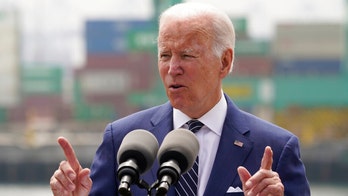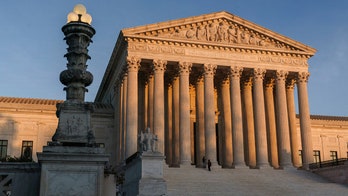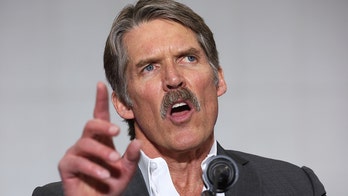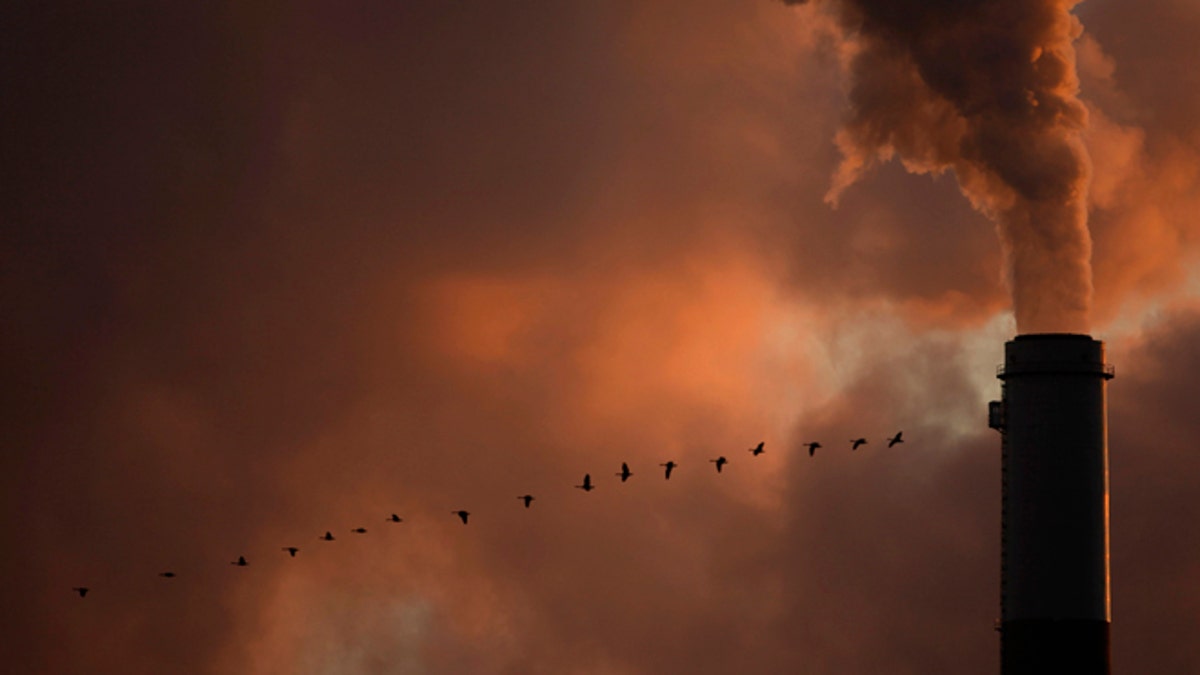
Jan. 10, 2009: A flock of geese fly past a smokestack at the Jeffery Energy Center coal power plant near Emmitt, Kan. (AP)
New clean-energy rules pushed through by the Obama administration are raising concerns that they could cripple the coal industry -- and may require power plants to use technology so risky that even the president's former top energy official once warned it could "kill."
On Friday, the EPA released a new proposal to set the first-ever carbon dioxide limits for new power plants.
To meet those emissions caps, power plants would likely have to use what is known as "carbon-capture technology," which involves burying the carbon underground.
The technology, which is still under development, remains expensive and not commercially available. But there are lingering safety risks.
Steven Chu, who served until recently as President Obama's energy secretary, cautioned in a 2007 talk sponsored by the Berkeley Lab in California that the process could be dangerous and bring legal challenges -- as well as additional costs -- for the companies involved.
Though he said the carbon would be stable in the long-term, the chief concern would be that in its initial state "as a big bubble of gas," it might leak to the surface. He seemed to describe those concerns as legitimate.
"There would be people saying, 'I don't want this done in my backyard,' because if the carbon dioxide ever does bubble to the surface it could actually kill people," he said. "Ten percent carbon dioxide is lethal. And so that's ... one of the issues."
He said the issue was being studied.
Six years later, no U.S. power plant has fully installed the technology, though some are pursuing it. EPA Administrator Gina McCarthy testified Wednesday on Capitol Hill that carbon-capture technology is "feasible" and available. She claimed coal can still have a future under the soon-to-be released regulations.
But lawmakers warn the system would cost "billions."
Tom Borelli, a senior fellow at FreedomWorks, accused McCarthy of "misleading Congress" on the feasibility of the technology.
"Clearly carbon capture is a pipe dream," he told FoxNews.com.
The process would involve removing carbon dioxide that would otherwise be belching out of power plants and redirect it underground, permanently. This could be stored as a gas, or a solid by combining it with other elements.
At low concentrations -- such as that in the ordinary air that people breathe -- carbon dioxide is not dangerous and is not flammable. But it is considered hazardous at high concentrations; if it displaces oxygen in a confined space, it can cause victims to suffocate.
But administration officials remain confident. McCarthy said the changes are needed to address climate change. In her written testimony to the House Energy and Commerce Committee, she said reducing carbon pollution is "critically important" to protecting the environment and health.
"Responding to climate change is an urgent public health, safety, national security and environmental imperative," she said. She noted that power plants account for roughly 40 percent of U.S. "carbon pollution." She said the revisions to the proposal reflect "new information and the extensive public comments" the agency has received.
"The evidence is overwhelming and the science is clear," Energy Secretary Ernest Moniz told a House Energy and Commerce subcommittee on Wednesday. "The threat from climate change is real and urgent. The basic science behind climate change is simple. Carbon dioxide makes the Earth warmer, and we are admitting more and more of it into the atmosphere."
Moniz added that any stabilization of surface temperatures in recent years was an indication of a "hiatus" of global warming, not an end to global warming.
FoxNews.com's Judson Berger and Fox News' Doug McKelway contributed to this report.

